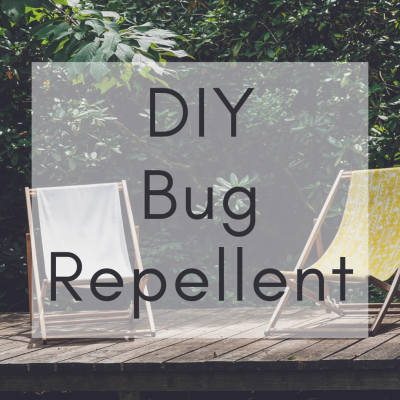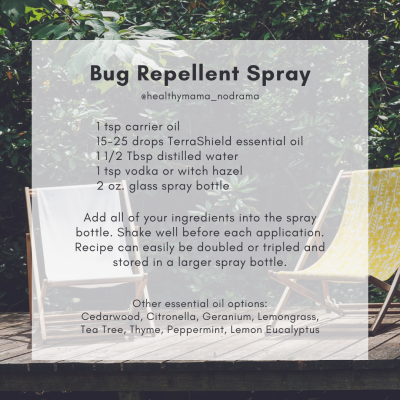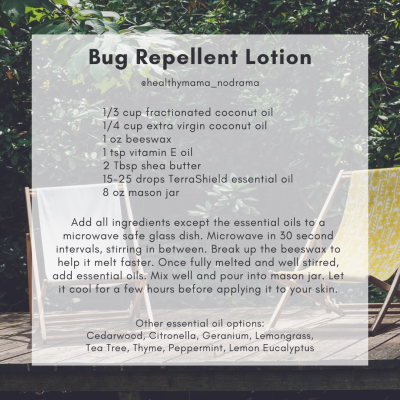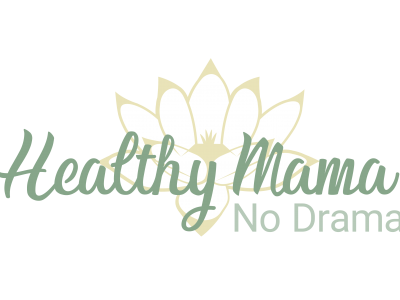Camping. Picnics. Canoe trips. Backyard gatherings. Firefly hunting. What do all of these have in common? They scream summer. And they scream bugs! And… the dreaded task of figuring out how to prevent those nasty bug bites. This is why many reach for bug repellent. I can smell it just sitting here thinking about it. And it immediately takes me back to summer camp as a kid.
But, setting the nostalgia aside, bug repellent eventually became one of those products that was on my “list” for a long time. The list of products that I knew weren’t safe for my family, but that I had no idea how to replace with safer (but still effective!!) alternatives.
Things to Consider
As cumbersome as mosquito, tick, or flea bites are at the time, the fact that they can lead to serious health issues, or even death, warrants they be taken seriously. So, use your best judgment to determine what type of bug repellent you may need.
There’s a lot of conflicting evidence out there and it can quickly become overwhelming. So, here are the questions I recommend you consider when choosing what type of bug repellent is best for you and your family:
- Are you in an area where disease from mosquitos, ticks, or fleas is prevalent? If you are, greater precaution may be warranted.
- What type of outdoor activities will you be doing, and how long will you be outside? This may help you determine if you need a stronger bug repellent.
- Are you more concerned with the ingredients in your product or avoiding catching an insect-transmitted disease? This will determine whether you look for a product with a chemical repellent or a natural, plant-based repellent.
DEET: Yay or Nay?
Here is my best attempt at a non-biased review based on the research I have done.
There is a lot of concern out there over the popular bug-repellent ingredient, DEET. I have been one of those people for several years and have, therefore, avoided it. All I’ve ever seen and heard about is how toxic it is. And I believe that it can be in large quantities or when not used properly. But there is also evidence to support that with proper application and precaution, it actually has a low toxicity and is effective at reducing risk from life-altering disease.
I know, I know…when I started doing my own research instead of just relying on hearsay, I was legit shocked. I found medical journal articles and test results that support the finding that DEET has low toxicity when used properly.
That being said, it’s still a man-made insecticide. While the majority of people have not had issues with it, there are still some cases where DEET could potentially be linked to some serious health issues. So again, use your best judgment. If you choose to use a bug repellent that has DEET, look for one that is less than 30% DEET, and make sure to follow safety and use instructions.
Safe Ingredients
According to the EPA, there are a few ingredients that have a high level of protection from a variety of biting insects and ticks, have good safety ratings, and are considered both effective and low toxicity. That being said, keep in mind these are considered safe in household products, following proper application. But for me, the question in the back of my head (even IF the amount used in household products is considered safe) is what happens when the ingredients in this product are combined with the ingredients in any other products we may be using or consuming? All of these ingredients, and the effect they have on our bodies compounds, and adds to your body burden, or toxic load. So, just keep that in mind when determining which route you choose to go. Even a little bit here and there, combined with a little bit here and there from another product, can add up to actually be significant.
The 5 ingredients deemed safe by the EWG are:
- Picaridin
- DEET (at less than 30 percent)
- IR3535 (at 20 percent)
- Oil of Lemon Eucalyptus and its synthetic derivative PMD
- 2-Undecanone
Word for the wise: be cautious when using any of these repellent chemicals. Follow the guidelines on product labels to avoid overexposure. Do not use them on infants under 6 months old, and some should not be used on young children either.
The EWG has a guide of bug repellents that feature these 5 ingredients.
What We Use
Despite the medical journal articles, and the common opinions out there that many of these “questionable” ingredients are, in fact, safe, I’m still not quite ready to board that train. I generally prefer to use as clean of ingredients as possible. And anytime I can find a safe solution that is also frugal and simple I call it a win. This is why our family has used an essential oil-based bug repellent for the last couple of years. DIY recipes are super simple to whip up and have worked great for us.
We are not in an area where bug-born illnesses are a huge concern. There may come a time when that may change and the higher priority is protecting my family against such diseases. If that time comes, I’ll revisit and see if our current solutions are still suitable. But, until then, I’m perfectly happy with my essential oil bug repellent!
But please hear me when I say this…the key is reducing toxic load and choosing safe products when and where you can. You may choose to make the switch in another area of your life for right now. And that’s fine. Either way, you’re still making conscious choices to take control of what is going on and in your body. And for that, I applaud you, my friend.
A Safe and Simple Solution
Aside from having cleaner ingredients than store-bought insect repellents, homemade bug repellent is easy, inexpensive, and even versatile!
Don’t worry though…if you’re just not the DIY type, there are some pre-made options for you out there. One of my favorites is doTERRA’s TerraShield outdoor blend. It naturally repels mosquitos tested at greater than 90% efficacy after 4 hours! It comes as a ready-to-use spray that you can spritz right onto your body and clothing. It also comes as an undiluted oil blend, allowing you to make your own spray bottle, apply it directly to your skin, soak your pet’s collar in, or diffuse outside to help clear the space while you spend time outdoors. This is my favorite portable diffuser that requires no electrical outlets! Please avoid those store-bought citronella candles. They’re filled with toxins that you do not want to be breathing in!
To make your own bug repellent, you just need a few ingredients and you’re all set.
- Carrier oil – helps the essential oils absorb into your skin over a longer period of time. Some great options are fractionated coconut oil, avocado oil, or sweet almond oil. Added bonus: they are great for your skin!
- Vodka or Witch hazel – if you choose witch hazel, be sure to select one that only has witch hazel listed in the ingredients like this one. Witch hazel has the ability to kill bacteria that lives within your skin’s pores.
- Beeswax – thickens the lotion and adds moisturizing benefits
- And the star ingredient: essential oils. Their strong, natural, scent will not only keep bugs away, but also allow you to enjoy the aromatic benefits. I prefer to buy only doTERRA oils because I’m confident in their above and beyond testing protocols (CPTG) and the purity of the end product.
What oils to use?
The following individual essential oils are recommended for their bug-repellent properties:
- Citronella
- Lemongrass
- Thyme
- Cedarwood
- Lavender
- Rosemary
- Geranium
- Spearmint
- Clove
- Eucalyptus
- Tea Tree
- Peppermint
I personally use an oil blend called TerraShield that is made specifically for repelling bugs. It uses 6 of these oils and works wonderfully! We spend a lot of time outside and in the woods and have been very pleased with it! You can get it as a 15mL bottle of oil to make your own spray or rub, or you can get it ready-to-go as a spray. This is a great option, especially if you don’t want to have to purchase all of the individual oils (although you could find some great uses for each of them…and I could help you there!).
Note: I know there are a lot of essential oil companies out there and I’ve certainly tried my fair share of brands. But after researching, and testing, and more researching, only one brand is worth spending money on (in my opinion), and that’s doTERRA.
Here are some great combo options if you want to make your own:
- Woodsy: 13 drops Rosemary, 7 drops Cedarwood
- Floral: 8 drops Geranium, 5 drops Lavender, 5 drops Rosemary, 2 drops Patchouli
- Hippie: 10 drops Lavender, 6 drops Cedarwood, 4 drops Patchouli
- Invigorating: 12 drops Lemon, 5 drops Peppermint, 3 drops Eucalyptus (use caution with lemon and sun exposure as it is a photosensitive oil).
- Citronella: 8 drops Citronella, 5 drops Cedarwood, 3 drops Lavender, 3 drops Lemongrass, 3 drops Thyme
Or feel free to experiment with your own combos! I would love for you to share below what you end up trying!

DIY Bug Repellent: Spray-On
If you’re like me and you prefer to spray on your bug repellent, this is the recipe for you!
- 1 tsp Carrier oil (fractionated coconut oil, sweet almond oil, sesame seed oil, or avocado oil)
- 15-25 drops of essential oil (see below for single oil recommendations or recommended combinations).
- 1 ½ Tbsp distilled water
- 1 tsp vodka or witch hazel
- 2 oz. glass spray bottle – amber is best to protect the essential oils from the sun
Add all of your ingredients into the spray bottle. Shake well before each application. Recipe can easily be doubled or tripled and stored in a larger spray bottle.

DIY Bug Repellent: Lotion
This recipes gives you more of the lotion, rub on option if that’s your preference.
- 1/3 cup fractionated coconut oil
- 1/4 cup extra virgin coconut oil
- 1 oz beeswax (one stick of these)
- 1 tsp vitamin E oil
- 2 Tbsp shea butter
- 15-25 drops see below for oil recommendations or recommended combinations)
8 oz mason jar – amber is best to protect essentials from the sun
Add all ingredients except the essential oils to a microwave safe glass dish. Microwave in 30 second intervals, stirring in between. Break up the beeswax to help it melt faster. Once fully melted and well stirred, add essential oils. Mix well and pour into mason jar. Let it cool for a few hours before applying it to your skin.

DIY Bug Repellent: Oil Rub
This recipe is also super simple. You only need 2 ingredients: a carrier oil and essential oils.
- 3-4 Tbsp Carrier oil (fractionated coconut oil, sweet almond oil, or avocado oil) – heavier dilution for children or someone with sensitive skin
- 15-25 drops of essential oil (see below for single oil recommendations or recommended combinations).
- Small glass bottle or jar – amber is best to protect the essential oils from the sun
Add the carrier oil into the small glass bottle or jar. Add 10-20 drops of your preferred essential oil. Mix well. When ready to apply, simply shake the bottle well and rub a small amount on exposed skin.

Some of the links above are affiliate links. This means that, at zero cost to you, I will earn an affiliate commission if you click through the link and finalize a purchase. Thanks for your support!
Related posts:
- Why Essential Oils Are…Essential If you’ve done even a small amount of researching online about natural health, chances are that you’ve come across essential oils. Their popularity is ever-growing both in the natural world...
- Non-Toxic DIY Dry Shampoo Can I tell you a secret? I don’t wash my hair every day. I don’t even wash my hair every week. It’s not because I’m lazy, it’s because my hair...
- My daily routine for healthy skin Youthful, healthy skin is something I think we all desire, but many don’t know how to achieve it. As we get older, our skin begins to show signs of aging...
- Healthiest Cooking Oils There are many oils on the market today. Some well-known, some not. Many people just grab the cheap and accessible vegetable or canola oil off the shelf without realizing the...


